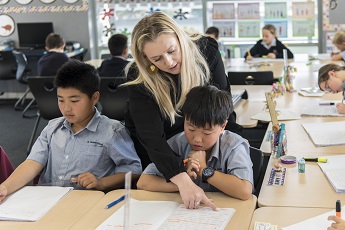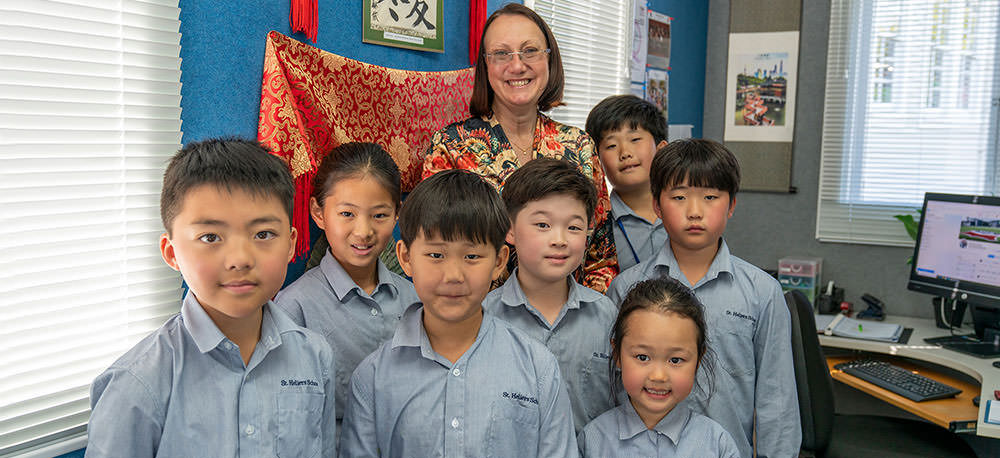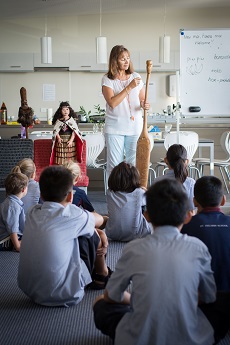Learning Programmes
Our comprehensive teaching programmes are based on the New Zealand Curriculum as prescribed by the New Zealand Ministry of Education.
The New Zealand Curriculum is highly regarded internationally.
Information about the New Zealand Curriculum Levels
Reading, Writing and Mathematics - Curriculum Year Levels
Core Curriculum — Educating for Excellence
The school curriculum is made up of eight essential learning areas:
-
English
-
Mathematics & Statistics
-
Science
-
Technology
-
Social Science
-
Health & Physical Education
-
The Arts
-
Learning Languages

Year 6 international students working on a classroom project. |
Underpinning the curriculum areas are five key competencies:
-
Thinking
-
Understanding language, symbols and texts
-
Relating to others
-
Managing self
-
Participating & contributing.
Enrichment Programmes
In addition to the core curriculum, St Heliers School provides a wide range of experiences
and resources to foster student learning.
For information about our Enrichment Programmes Click here
|
Second Language Programme
Mandarin is offered to Year 5 to Year 8 students.
A Mandarin Learning Assistant is employed to assist with the delivery of the programme.
Cultural Learning
Māori
Te Reo Māori and New Zealand Sign Language are official languages in New Zealand. English is the medium for teaching in most schools.
Aotearoa New Zealand has a proud bi-cultural history. At St Heliers School our students are exposed to a range of cultural experiences relating to Tikanga, Te Reo and Te Ao Māori (Māori language, customs and the Māori view of the world).
We aim to uphold all of the principles of Te Tiriti o Waitangi ( the Treaty of Waitangi).
During their time at our school, students gain an understanding of Māori culture and language and how that strengthens our bicultural relationship.
Students have a diverse range of experiences, including a visit to a Marae in Auckland, powhiri practices, Kapa Haka (cultural performance group) and Māori culture sessions within the classrooms. Foundation level of Te Reo (Māori language) is used daily.






 Maori cultural session for our international students, helping them learn about the history and culture of New Zealand.
Maori cultural session for our international students, helping them learn about the history and culture of New Zealand.